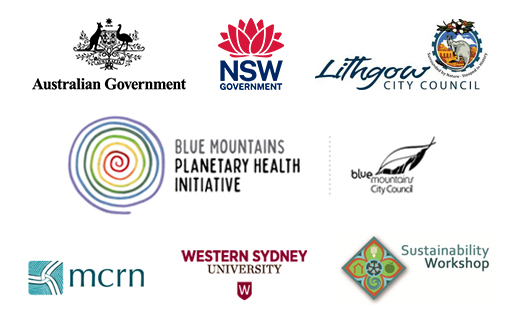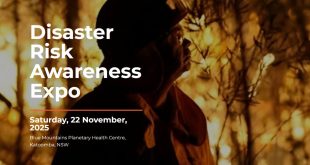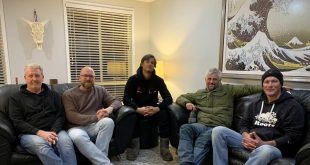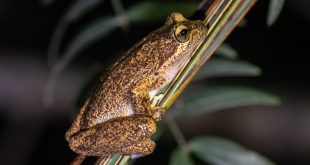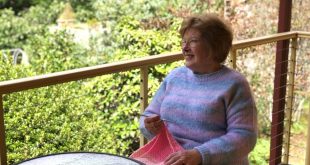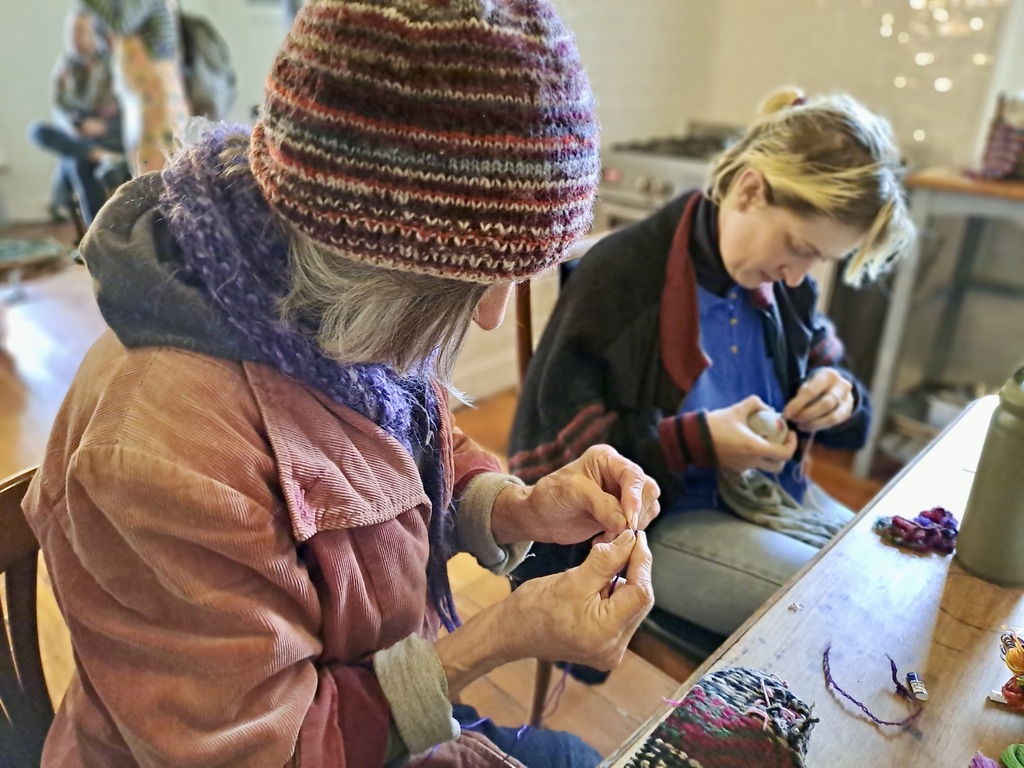
Visitors at Lyttleton’s Thread Fair mending old clothes.
Story and photographs by Belle Butler
If we look at a piece of fabric, it is made strong by the interweaving of many individual threads. Alone, a single thread may snap. However, bound together with many other single threads, a greater, sturdier, more functional thing is formed.
I wouldn’t normally lean into the obvious metaphor, but when it comes to Lyttleton Stores Co-operative in Lawson, it seems fitting.
Lyttleton functions as a deft weaver, drawing in large numbers of individuals via open days, workshops, and events such as this year’s Thread Fair. It succeeds in creating something greater – the stronger mesh of community.
Belle Butler
It was proper Blue Mountains weather on the day of the Thread Fair. A stubborn mist hung low, anchored to the treetops. A constant drizzle coated everything in a weighty silver sheen. It was a stay-at-home-in-pyjamas kind of day, but that didn’t stop an estimated 200 people from venturing out to attend the Fair.
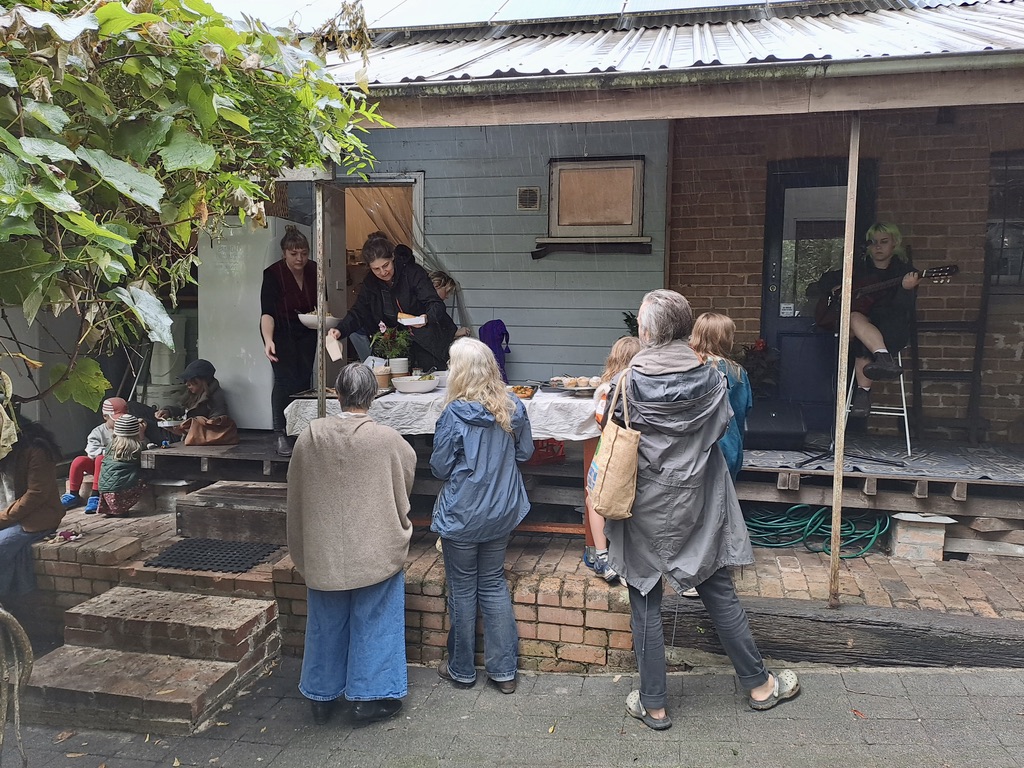
Braving the rain. Visitors lined up for some home-cooked local and organic produce.
Partially funded by Blue Mountains City Council via a Community Recovery Grant, the Thread Fair built on a resilience festival begun by Lyttleton last year. The aim of the Fair was to give people an opportunity to step away from buying everything new. “We have a surplus of commodities,” said co-founder of Lyttleton, Jacinta Carmichael-Parissi. “We don’t need to be making new things all the time or relying on international systems, which is bad for the environment and bad for humans – we can be looking for pre-loved items or mending and fixing things, and repurposing with dye.”
With clothing waste a major environmental issue – in Australia it’s estimated that around 80% of unwanted textiles end up in landfill, equating to about 240,000 tonnes each year – Lyttleton’s Thread Fair offered visitors an opportunity to take action and learn how to individually help curb those figures.
Set up as a kind of open day, the Fair consisted of different ‘stations’ in which visitors could buy second-hand fashion, participate in an activity or learn a new skill. These included mending clothes, dyeing fabric with indigo, repurposing bedsheets by turning them into dress-up butterfly wings, or creating woven wall-hangings out of plants.
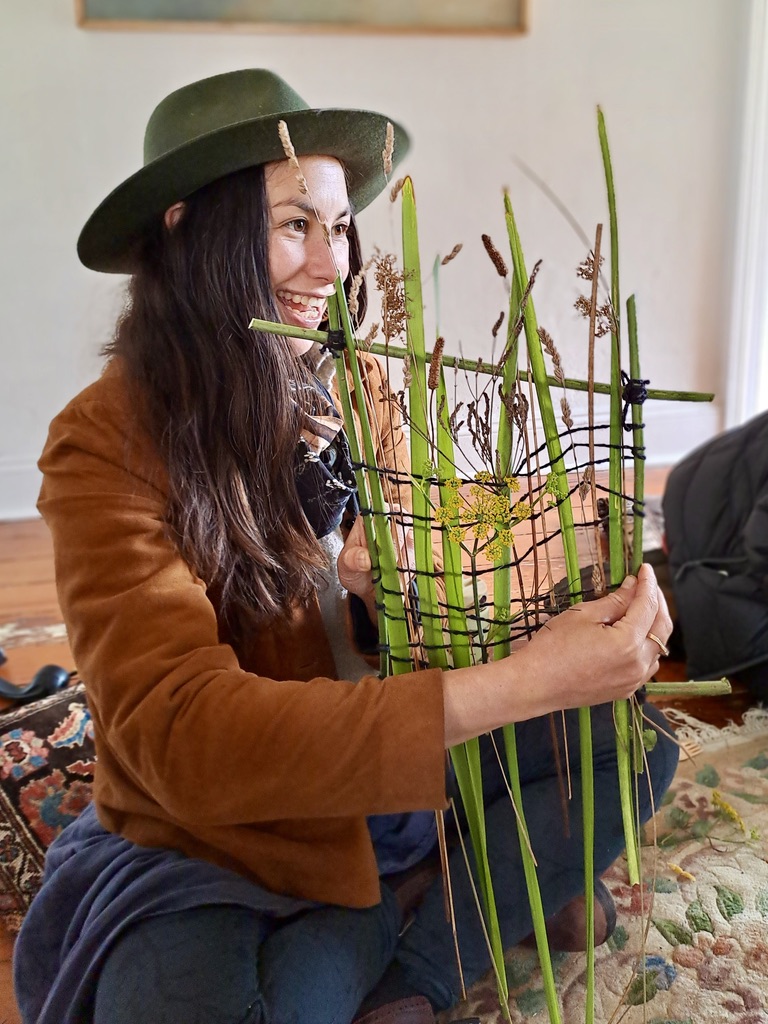
Rachael Harrex showing her woven plant wall-hanging
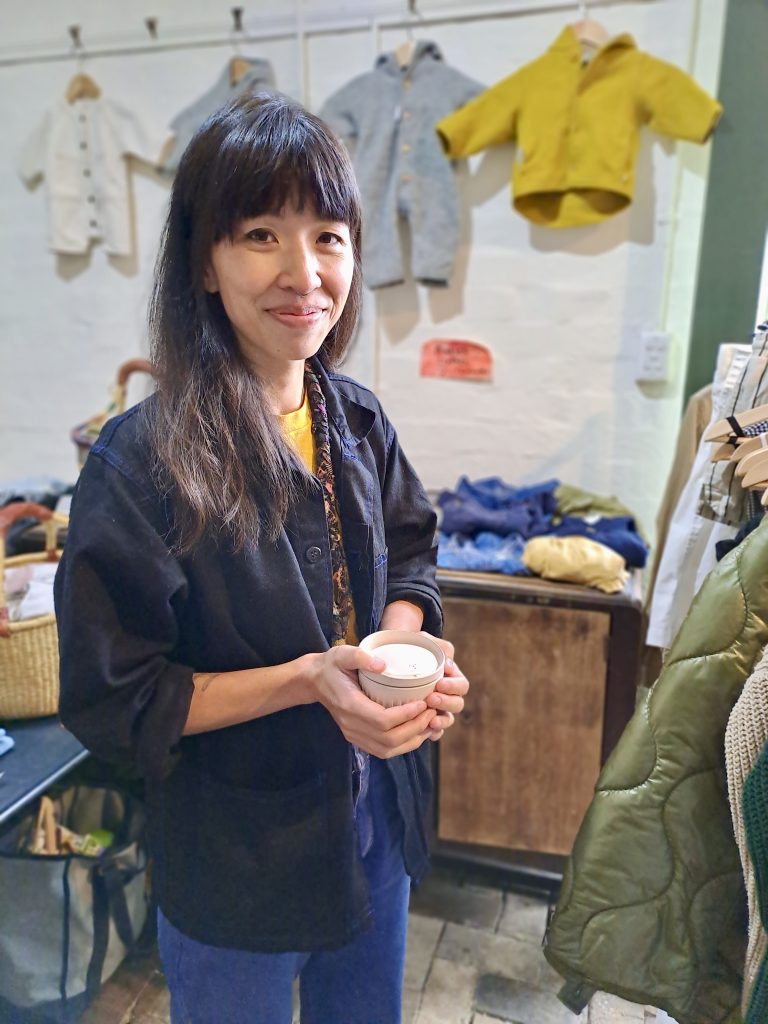
Rosie Sheppherd at her vintage clothing stall
“It’s important that we maintain or preserve skills from the past. That we remember or relearn things we might need to do in order to have a resilient community going forward and facing the unknown events of the future.”
Jacinta Carmichael-Parissi
This philosophy was in practice at the mending station inside the Lyttleton cottage where Robyn Moloney sat at the kitchen table from 10am-3pm darning old clothes and passing on this skill to others.
There’s visible darning and invisible darning,” Robyn told me. “ I think the visible darning adds to it and gives it character.” She smiled as she held up clothes in which a hole had been turned into a funky patch or eye-catching pattern. One of them, a child’s vest, she gave away to a new grandmother at the event.
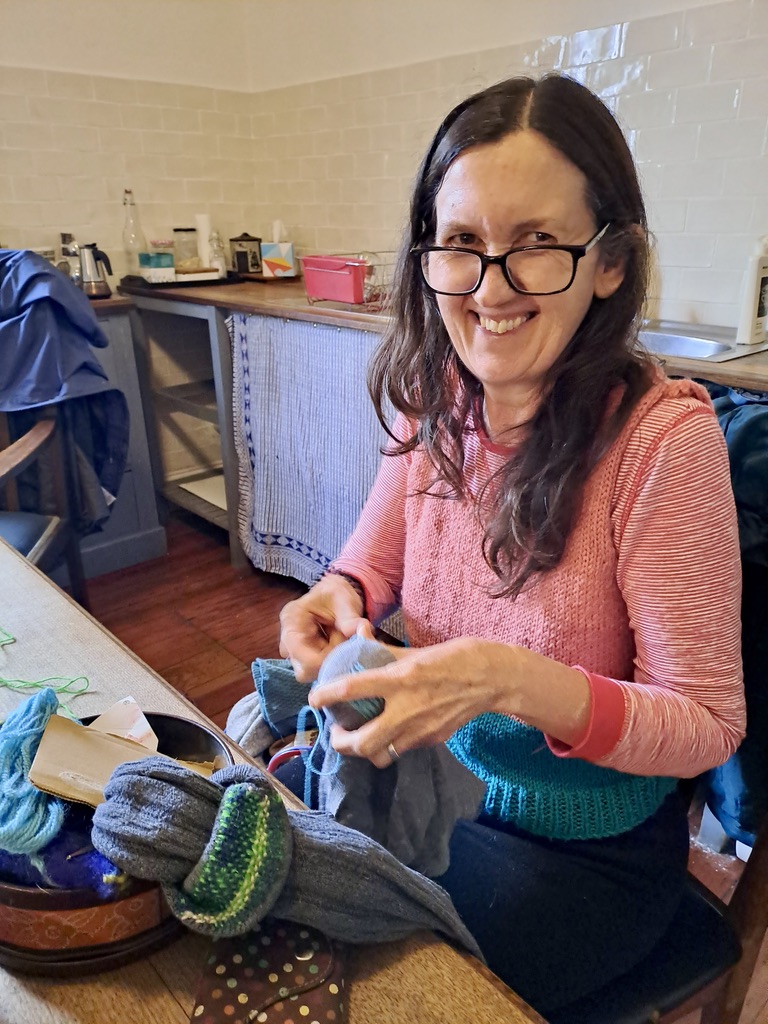
Robyn Maloney hosting the mending station
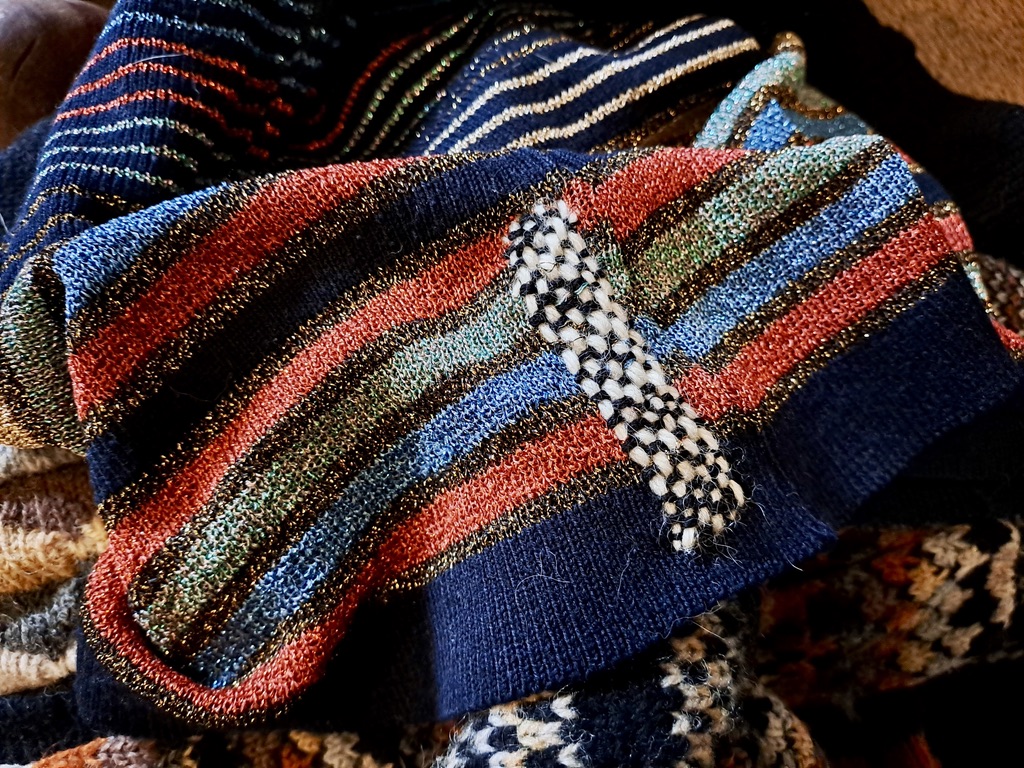
Visible darning bringing some new character to an old jumper
Every time I passed the mending table there were different visitors sitting at it – heads bowed, fingers busy with needle and thread. Often some interesting conversation flowed between them, so it seemed it was not just a practical skill they were gaining, but a moment of connection.
At the dyeing station, where artist Pip Bishop shared her knowledge on indigo dyeing, I witnessed a similar thing. A group of people gathered, some dipping their old pillowcases or t-shirts into a steaming vat of indigo. Others stood by chatting, occasionally stopping their conversation to admire the revealing of a freshly dyed item. Here too there was obvious great value on offer – the transforming of old items into something fresh, as well as the incidental act of connecting with others.
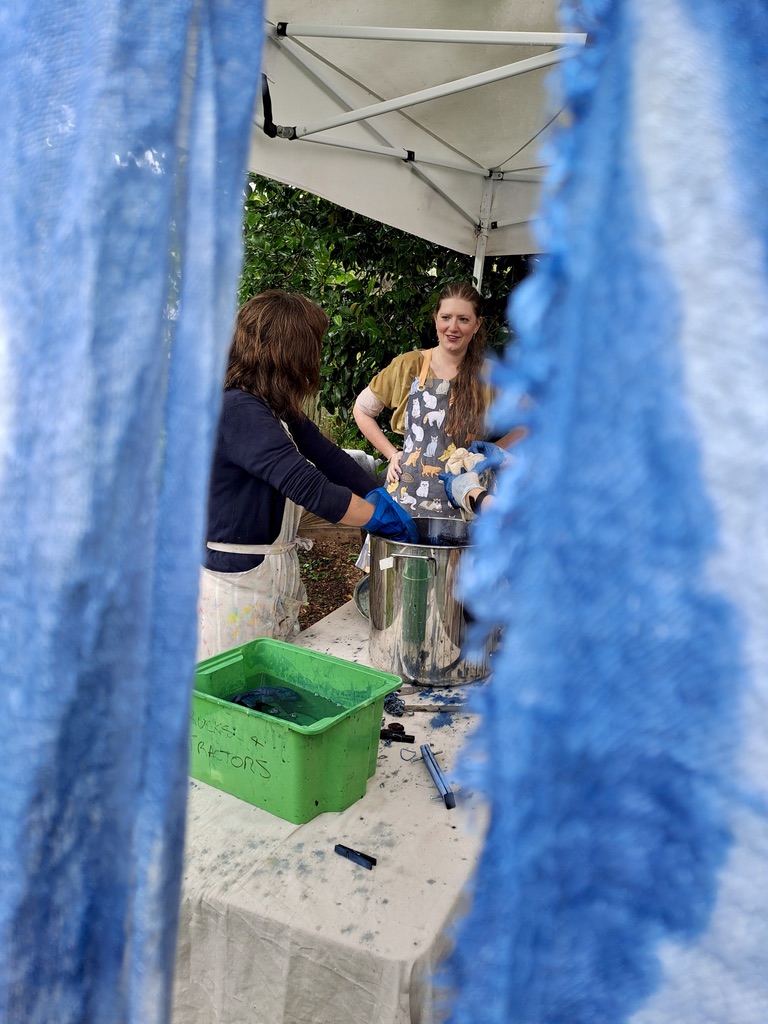
Pip Bishop and Frances Goudie at the indigo dyeing station
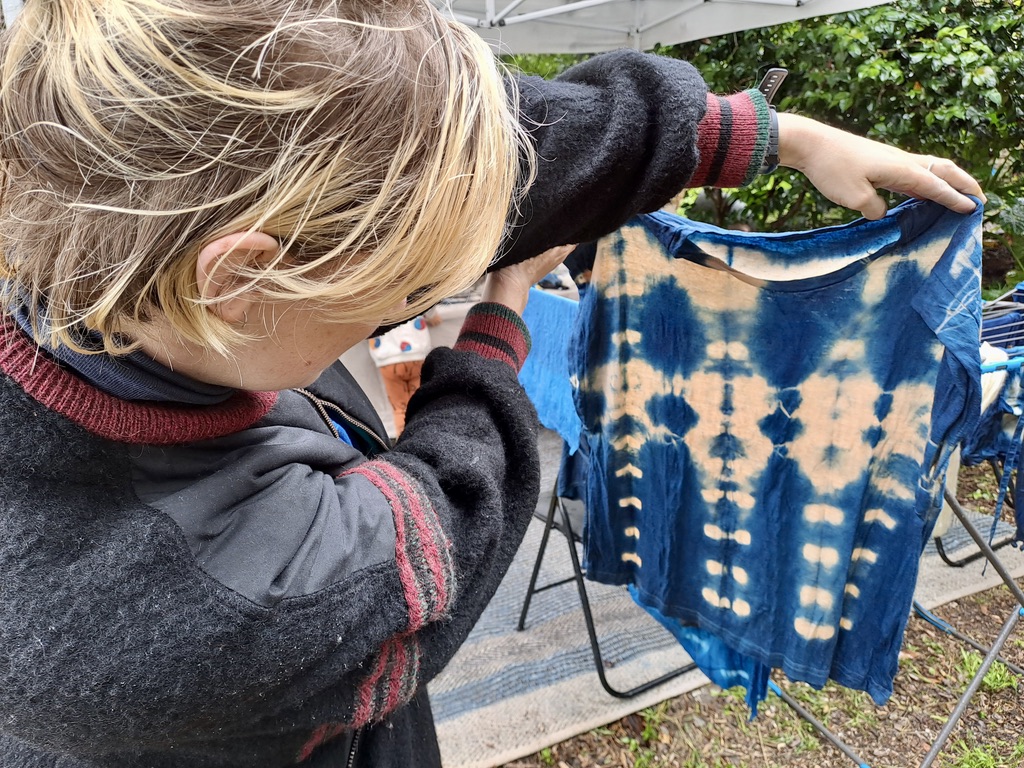
Caitlin delighted with her transformed shirt
It was at the dyeing station that I met a family recently moved to Hazelbrook from the Northern Beaches. They were chuffed with their decision to move. Without any prompting from me, one of the sons, Kiran Best, began to rave about the sense of community here. “You just don’t really get this kind of thing in the suburbs,” he said.
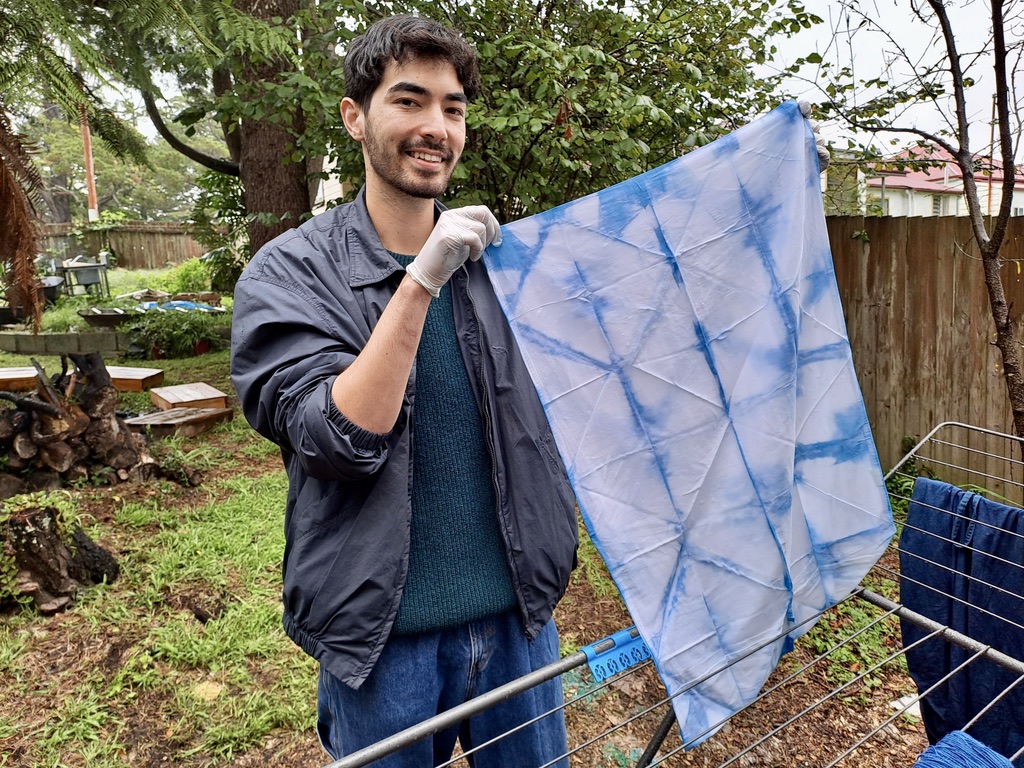
Kiran and his family gave new life to their pillow slips
Kiran’s experience is a credit to the efforts made by the community owned and run co-op in providing a space for people to come together. The first thing Jacinta said to me when I asked her about the main purpose of Lyttleton was to “build community connections around the food system, organic growing, cooking, eating, sharing and learning.
“We wanted to create a space for people to build their own connections,” she said. “It’s not outsourcing community to an organisation, but rather, helping community to build autonomously in a nurtured space.”
All of Lyttleton’s initiatives demonstrate the co-op’s commitment to this philosophy: the shop, the resilience festival and follow-up Thread Fair, ongoing workshops, volunteer working bees and open days. This philosophy was embedded in Jacinta’s life experience from a very young age. “Growing up in the Blue Mountains,” she said, “I witnessed the value of community in being able to get amazing things done in terms of the environment and each other. My parents were very active in these things, so I was exposed to it from a very young age.
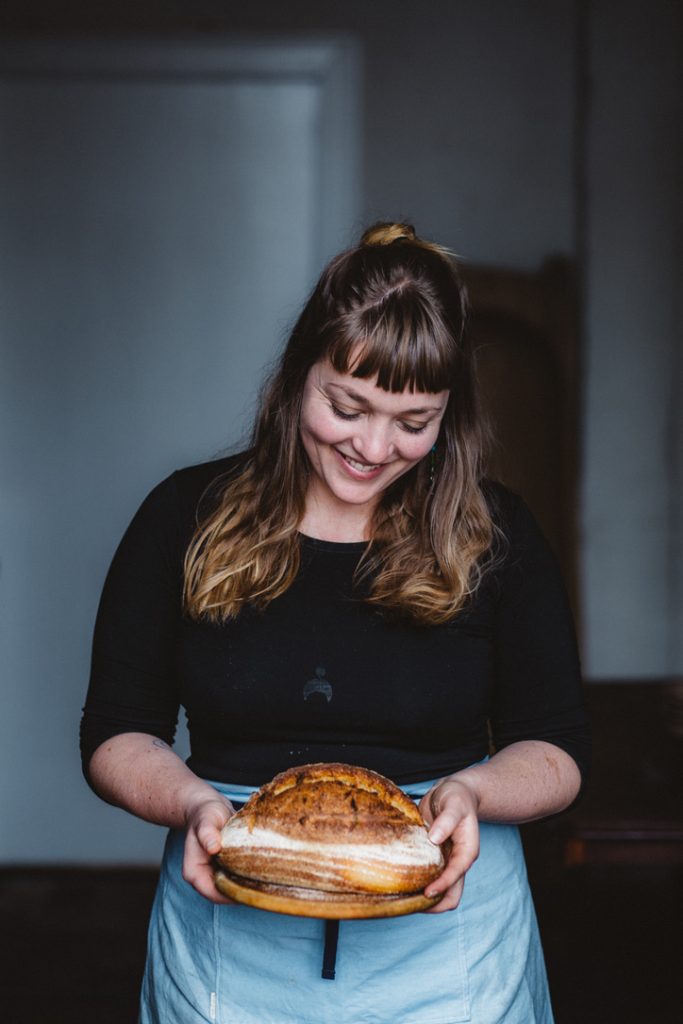
Jacinta Carmichael-Parissi (Luisa Brimble)
“I guess I got a bit worried,” she went on. “I thought, what can I do to help save the world?” After going through grand possibilities of action – from prime ministership to extreme activism – Jacinta landed on Lyttleton, a place in which she could do the things that she loved, to help build a community committed to valuing the environment and making a better future. “It came down to that quintessential thing of thinking globally, acting locally,” she said.
All those involved in running Lyttleton Stores might be pleased to know that just as I was about to leave the Thread Fair, I overheard a conversation amongst the clothing racks at the pre-loved fashion station. One woman said to another: “It’s impossible to come here and not see a million people you know.” The other responded: “I know. It feels like visiting someone’s home.”
On a drizzly Mountains day, that’s a fair achievement.
You can visit Lyttleton Stores Co-operative in Lawson at 1 Badgery Crescent to buy organic and local food as well as giftware and art. If you would like to attend any of their future events, they will be listed and updated on their website: Lyttleton Stores Cooperative.
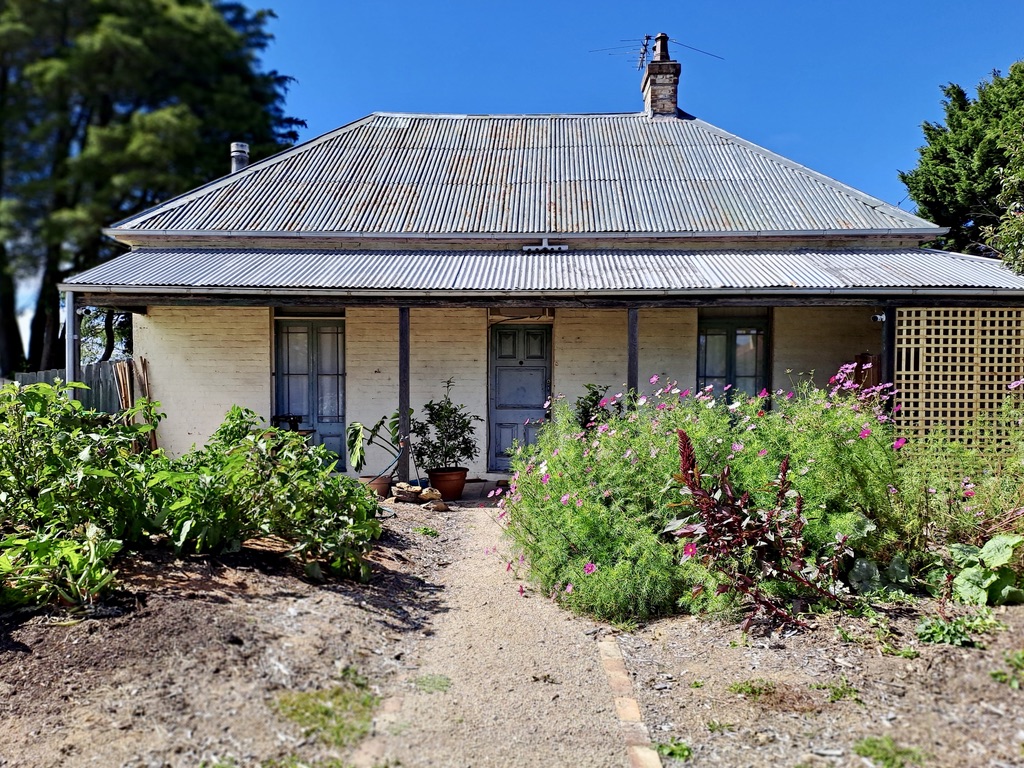
Lyttleton cottage on a finer day
This story has been produced as part of a Bioregional Collaboration for Planetary Health and is supported by the Disaster Risk Reduction Fund (DRRF). The DRRF is jointly funded by the Australian and New South Wales governments.
